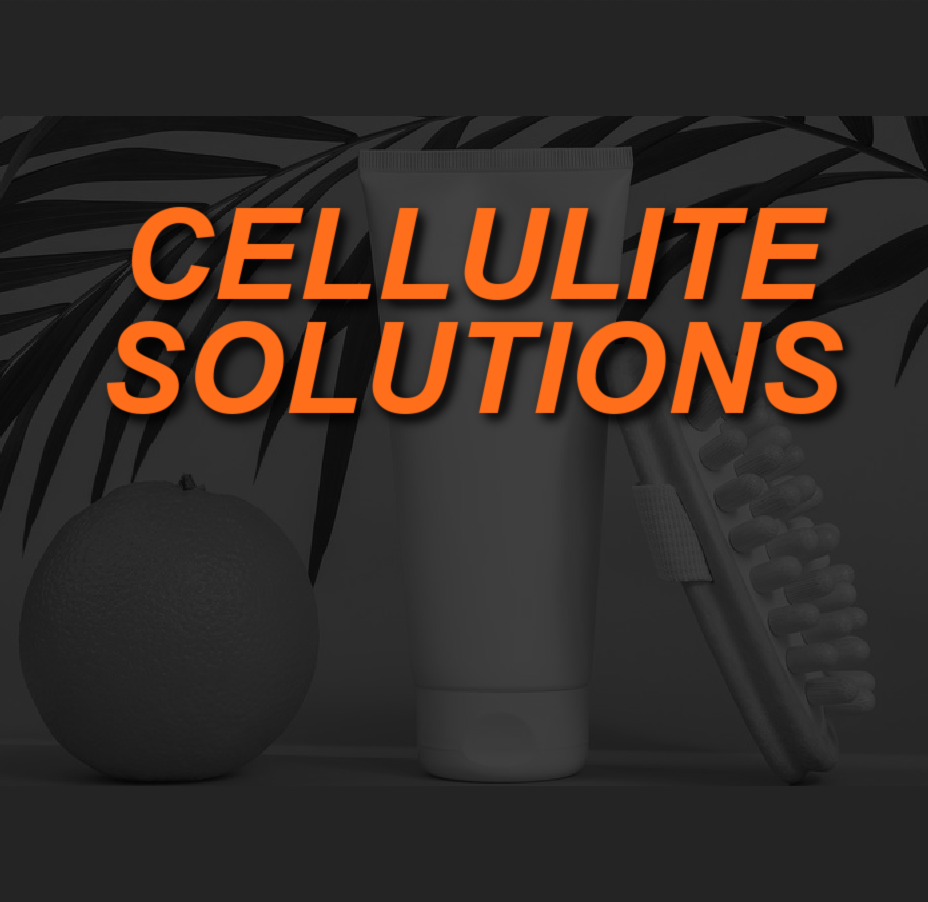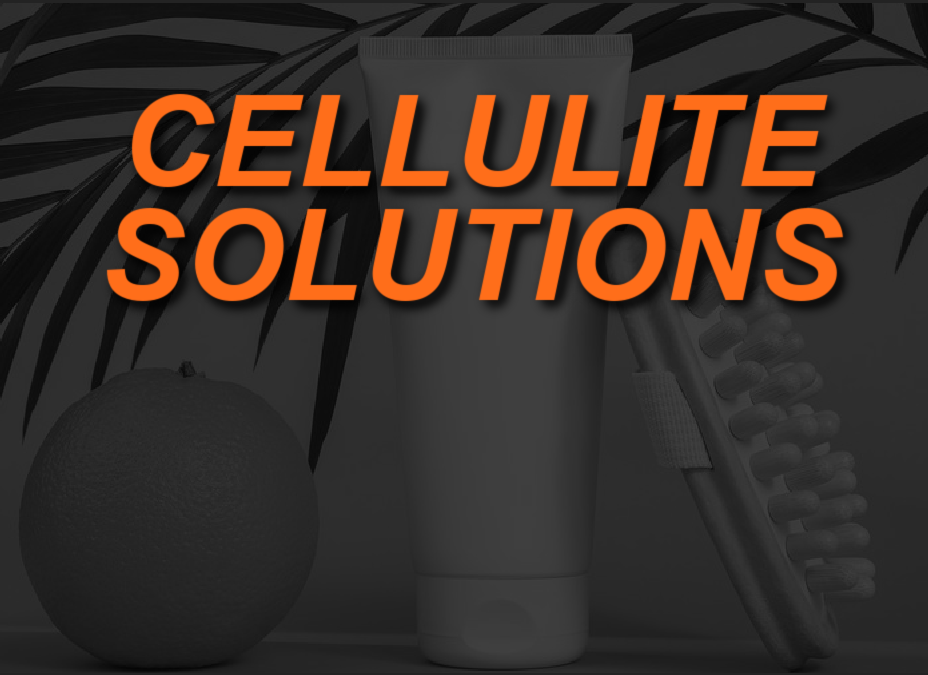
We recently discussed the potential reasons why cellulite can affect up to 90% of women, including hormonal imbalance, poor diet, excess adipose, and genetic factors. While totally eliminating cellulite is an unfair goal to set for any woman since a definitive “cure” has yet to be identified, there are approaches explored by researchers and reported anecdotally that may provide some relief to this cosmetic plague. Read on to explore these options and how effective they actually are to reduce cellulite.
What is Cellulite?
Cellulite is the unsightly appearance of dimpling on the skin, resultant of weakening collagen fibers between subcutaneous fat tissue and the skin. Fat lobules herniate from the connective tissue, creating the “orange peel” look. While this condition isn’t exactly a disease, the way it can impact mental and emotional health, as well as its multifactorial etiology, makes it a relevant health issue.
Cosmetic Procedures to Reduce Cellulite
While there are several invasive and non-invasive weight loss procedures to explore, these do not address the problem of cellulite. This specific problem has its own set of cosmetic solutions.
Acoustic Wave Therapy is a newer approach and has been shown to be the most effective treatment against cellulite. According to researchers, it works by using pulses that penetrate the tissue “without causing a thermal effect or micro lesions, but leading to a stimulation of tissue metabolism and blood circulation, inducing a natural repair process with cell activation and stem cells proliferation.” It is safe and non-invasive, and one study indicated it decreased cellulite severity, reduced thigh circumference, and improved quality of life. This treatment requires 12 sessions occurring over a 6 week period.1,2
Radiofrequency (RF) technology is an FDA-approved treatment that heats the skin tissue. The impact is purported to “tighten” the skin, abating the dimpling appearance. This treatment can also be combined with suction, massage, and even infrared light (IF); studies have indicated that there is improvement at the end of treatments, but they may not be lasting without additional maintenance treatments3.
Non-Abative Laser Treatments, or cold laser treatments, are employed for cellulite reduction, however, critics assert that the laser is simply not strong enough to penetrate the layers of skin where tissue is in need of treatments.
Liposuction is a popular cosmetic fat removal procedure that instantly suctions fat tissue out of the body. Contrary to what one might expect, it does not reduce the appearance of cellulite on the skin since this dimpling occurs subcutaneously and not in the deeper fat stores where lipo is performed. What’s worse is, lipo can actually increase the appearance of cellulite, as the skin will become looser without any improvements to the tissue below.
Laser Liposuction or liposculpture, involves the use of lasers to dissolve the fat first, and then removal of the fat with cannulas. It is purported to be less painful and traumatic, however, the lasting impact on the appearance of cellulite has not been confirmed. Some patients see lasting results, but if weight is regained, so can the dimpling return. Liposculpture can only target more superficial fat, and there is a risk of overheating the skin as well.
Subcision is an outpatient procedure where an instrument is inserted beneath the skin and used to break up the fibrous septal bands between skin and adipose that creates the surface dimpling. While most patients were satisfied with results after this procedure, there are definite elevated surgical risks, pain, and recovery time. One study reported that after two years, only 10% of patients were still satisfied with results.4 This procedure can also be coupled with laser or vacuum technology, which demonstrates some improvements, but not eradication, of cellulite.
Carboxytherapy is an interesting approach injects CO2 beneath the skin to plump up the skin. Early studies indicate that it is effective in reducing the appearance of cellulite.5
Topicals
There is no lack of marketing ploys to draw in the majority of women looking for quick, inexpensive fixes to reduce cellulite. Do any of them have any merit at all? Believe it or not, yes! Some studies have evaluated the efficacy of the ingredients of certain creams that may reduce dimpling when used consistently.
One study looked at the synergy of several ingredients in vitro to observe lipolytic action and collagen production before applying the mixture in vivo on patients.6 The ingredients that resulted in observable action included Furcellaria lumbricalis, Fucus vesiculosus (both types of seaweed), retinoid (vitamin A), and conjugated linoleic acid (CLA). (One ingredient, a glaucine mixture, did not exhibit results). Participants who applied the lotion were reported by clinicians to exhibit significantly less cellulite and increased skin thickness.
Another set of researchers reported the effects of tetrahydroxypropyl ethylenediamine, retinol, carnitine, forskolin, and caffeine on the appearance of cellulite. The combination of the first three listed ingredients is thought to increase production of keratinocytes, increasing skin thickness; caffeine and forskolin purported to mobilize fat cells. “After 4 weeks of twice-daily application of the product, significant reductions in circumference of abdomen, hips-buttocks, and waist were already observed. …stubborn cellulite decreased significantly from 4 weeks of treatment and tonicity improved from 8 weeks. Improvements [noted of] all the measured body parts after 12 weeks.” Sounds promising!
Certainly plenty of OTC cellulite creams contain caffeine, horse chestnut, and retinol claiming to reduce cellulite with mixed reviews.
Progesterone cream has not been clinically evaluated by anecdotally, women have reported reductions in cellulite and associated edema. Given that excess estrogen and lower progesterone (estrogen dominance) is related to fat retention, increasing progesterone may have an impact on reducing the appearance of cellulite. This is not an approach to do unsupervised. Having hormones evaluated via DUTCH test and guidance from a health professional is strongly advised.
Dry brushing and massage are other practices some claim will reduce the appearance of dimpled skin. Dry skin brushing employs a natural bristle brush to simply sweep skin gently upwards towards the heart. It is said to improve and stimulate circulation and move lymph beneath the skin. Similarly, deep massage will improve circulation, but may also help break up the fibrous connections that create the puckering effect. Employing these approaches are probably only likely to work when done daily and consistently and in conjunction with other methods.
Lifestyle Factors
I’m surely preaching to the choir but it bears mentioning that nutrition and exercise are paramount in improving the aesthetic of the body along with overall health and wellness. Eating a healthful, nutrient-dense diet high in plant foods, low in saturated and trans fats, high in Omega-3’s, and low in processed foods will keep inflammation at bay, the vascular system healthy, the liver detoxifying optimally, and reduce the accumulation of fats and toxins which contribute to cellulite. Regular exercise involving both cardio and strength training, will synergistically support the cardiovascular system, move lymph and waste products out of fat stores, while also mobilizing fat. Attempting to cut lifestyle factors out of the equation and opt primarily for invasive or non-invasive interventions to reduce cellulite will surely result in recurrence over time.
While the appearance of ripply thighs and tummies can be a source of discontent for many people, our primary objective of health and wellness coaches is to support our clients on their wellness journey. Aside from exercise programming, nutrition guidance, and fielding multiple inquiries in every health sphere imaginable, mindful coaching also includes building self-esteem and self-efficacy with regards to performance and body image.
Help your clients to love their bodies no matter how flawed or imperfect, and remind them that the name of the game is healthful practices and improving quality of life; there is no room for overt criticism of oneself in that picture. Our bodies may never achieve perfection, but our commitment to exercise and a healthy lifestyle will bring our clients closer to feeling content and fulfilled–definitely an achievement worth aiming for.
References
- https://pubmed.ncbi.nlm.nih.gov/27997260/
- https://www.researchgate.net/publication/253433195_Acoustic_Wave_Treatment_For_Cellulite-A_New_Approach
- https://pubmed.ncbi.nlm.nih.gov/18991154/
- https://www.ncbi.nlm.nih.gov/pmc/articles/PMC5234561/
- https://pubmed.ncbi.nlm.nih.gov/27578994/
- https://pubmed.ncbi.nlm.nih.gov/22360330/
- https://www.aad.org/public/cosmetic/fat-removal/cellulite-treatments-what-really-works
NFPT Publisher Michele G Rogers, MA, NFPT-CPT and EBFA Barefoot Training Specialist manages and coordinates educational blogs and social media content for NFPT, as well as NFPT exam development. She’s been a personal trainer and health coach for over 20 years fueled by a lifetime passion for all things health and fitness. Her mission is to raise kinesthetic awareness and nurture a mind-body connection, helping people achieve a higher state of health and wellness. After battling and conquering chronic back pain and becoming a parent, Michele aims her training approach to emphasize fluidity of movement, corrective exercise, and pain resolution. She holds a master’s degree in Applied Health Psychology from Northern Arizona University. Follow Michele on Instagram.


